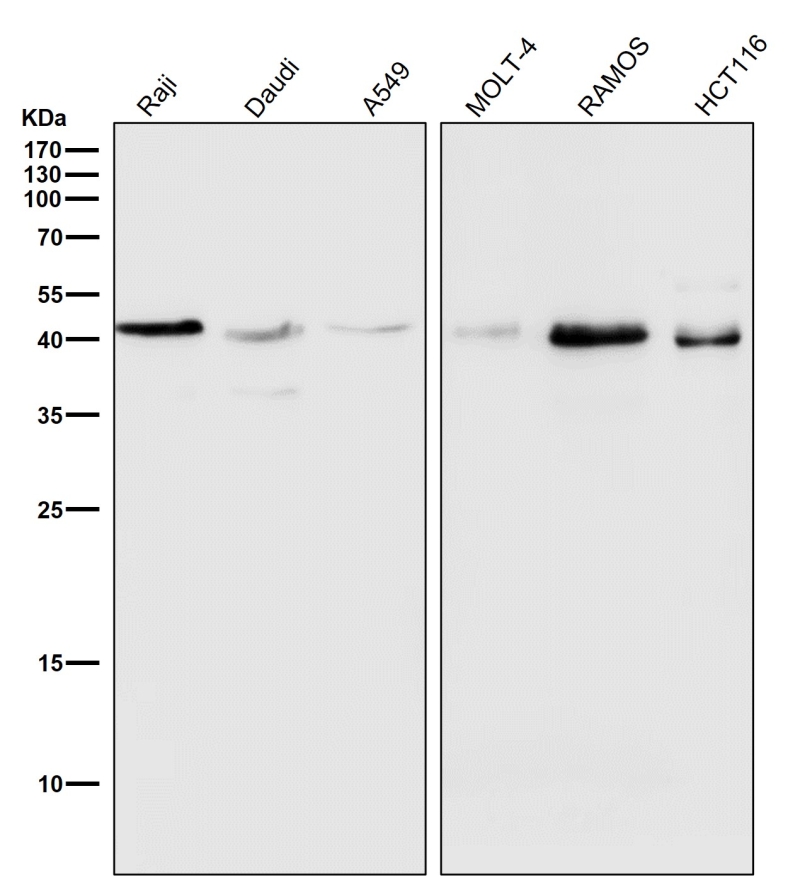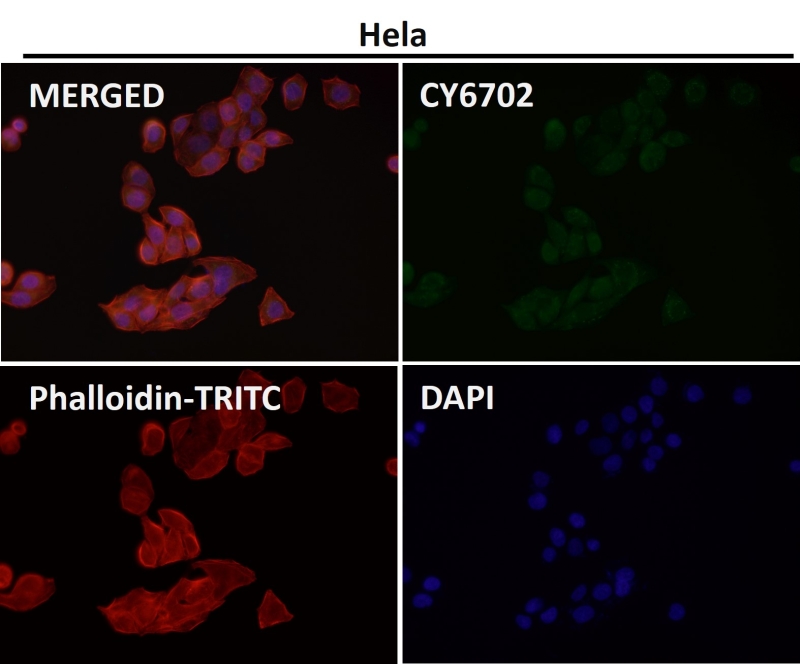



| WB | 咨询技术 | Human,Mouse,Rat |
| IF | 咨询技术 | Human,Mouse,Rat |
| IHC | IHC:1/100-1/200;IHF:1/50-1/200 | Human,Mouse,Rat |
| ICC | 1/50-1/200 | Human,Mouse,Rat |
| FCM | 1/20-1/100 | Human,Mouse,Rat |
| Elisa | 咨询技术 | Human,Mouse,Rat |
| Aliases | HLA class I histocompatibility; HLA A; HLA B;;HLA A/B |
| WB Predicted band size | Calculated MW: 41,40 kDa ; Observed MW: 41 kDa |
| Host/Isotype | Rabbit IgG |
| Antibody Type | Primary antibody |
| Storage | Store at 4°C short term. Aliquot and store at -20°C long term. Avoid freeze/thaw cycles. |
| Species Reactivity | Human |
| Immunogen | A synthesized peptide derived from human HLA A |
| Formulation | Purified antibody in PBS with 0.05% sodium azide,0.05% BSA and 50% glycerol. |
+ +
以下是关于MHC class I抗体的3篇参考文献及其摘要概括:
1. **文献名称**:*Crystal structure of the human class I MHC antigen HLA-A2*
**作者**:Bjorkman, P.J. et al.
**摘要内容**:该研究首次解析了人类MHC class I分子HLA-A2的晶体结构,揭示了其抗原结合槽的三维构象及其与β2微球蛋白的结合方式,为理解MHC class I分子呈递抗原肽的机制提供了结构基础,相关抗体被用于验证结构域功能。
2. **文献名称**:*Antigen processing and presentation by MHC class I molecules*
**作者**:Neefjes, J. et al.
**摘要内容**:综述了MHC class I分子从抗原肽加工、转运到细胞表面呈递的全过程,重点讨论了抗体在追踪MHC class I分子动态定位(如内质网至细胞膜)及验证抗原结合特异性中的应用。
3. **文献名称**:*MHC class I recycling is regulated by antibody-mediated endocytosis*
**作者**:Hansen, T.H. & Bouvier, M.
**摘要内容**:该研究利用抗MHC class I抗体(如W6/32)探究其内吞途径,发现抗体结合可触发MHC class I分子从细胞膜内化并循环至内体,揭示了抗体干预下MHC class I的膜动态调控机制。
4. **文献名称**:*Therapeutic antibodies targeting MHC class I for immune modulation*
**作者**:Blum, J.S. et al.
**摘要内容**:探讨了靶向MHC class I的抗体在自身免疫病和癌症治疗中的潜力,例如通过阻断抗原呈递抑制自身免疫反应,或通过增强肿瘤细胞表面MHC class I表达促进T细胞识别。
以上文献覆盖了结构解析、功能机制及治疗应用,抗体在其中作为研究工具或治疗策略的核心组分。
Major histocompatibility complex (MHC) class I molecules are cell surface proteins critical for adaptive immunity, present in nearly all nucleated vertebrate cells. They bind intracellularly processed peptide antigens (typically 8-11 amino acids) and present them to CD8+ cytotoxic T lymphocytes (CTLs), enabling immune surveillance against infected or malignant cells. Structurally, MHC class I consists of a polymorphic α-chain (encoded by HLA-A, -B, or -C genes in humans) non-covalently linked to β2-microglobulin. The α-chain forms a peptide-binding groove, with polymorphism determining antigen-binding specificity and immune diversity across individuals.
Antibodies targeting MHC class I (anti-HLA class I in humans) have significant clinical and research implications. They are widely used in transplantation to assess donor-recipient compatibility, as mismatched MHC I can trigger graft rejection. These antibodies also serve as diagnostic tools in autoimmune diseases (e.g., rheumatoid arthritis) and viral infections (e.g., HIV), where altered MHC I expression may impair immune recognition. In cancer biology, reduced MHC I expression – detectable via specific antibodies – correlates with tumor immune evasion. Therapeutic anti-MHC I antibodies are explored for modulating immune responses, though their use risks unintended immunosuppression. Challenges persist in distinguishing pathogenic from benign antibodies and interpreting cross-reactivity due to MHC I's extensive polymorphism.
×